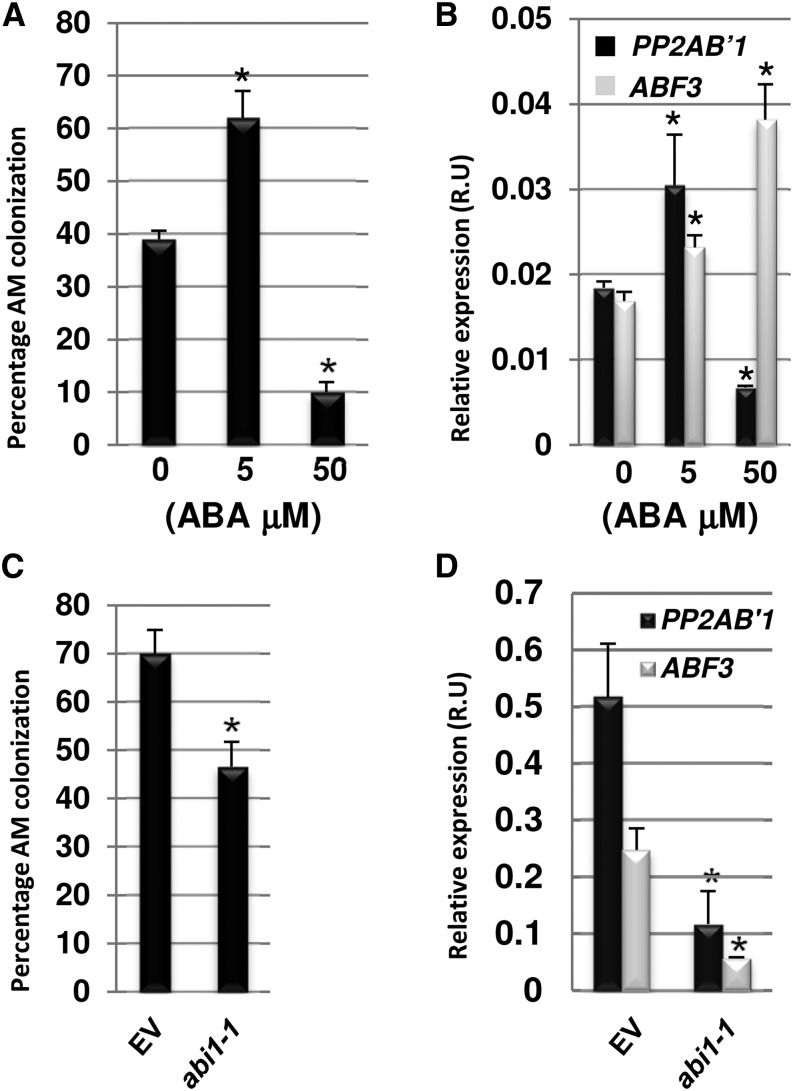Figure 1.
ABA modulates AM colonization and PP2AB′1 expression. A, Quantification of AM colonization in the wild type after 4 weeks of inoculation with R. irregularis and external application of 0, 5, or 50 μm ABA. Values are means ± se (n = 16) from one biological replicate (for biological replicates 2 and 3, see Supplemental Fig. S1). Asterisks indicate significant differences between the ABA-treated roots (5 and 50 μm ABA) and the control (0 μm ABA; Student’s t test; P ≤ 0.01). B, Quantitative RT-PCR to monitor PP2AB′1 and ABF3 expression in AM colonized roots watered with 0, 5, or 50 μm ABA. Asterisks indicate statistical significance relative to the untreated control (Student’s t test; P ≤ 0.01). R.U, Relative units. C, Transformation of the Arabidopsis dominant-negative allele of abi1-1 in the wild type leads to a decrease of R. irregularis colonization at 7 weeks after inoculation. Values are means ± se (n = 10 [empty vector] and n = 14 [abi1-1]) from one biological replicate (for biological replicates 2 and 3, see Supplemental Fig. S4). The asterisk indicates a significant difference from the wild type transformed with the empty vector (EV; Student’s t test; P ≤ 0.01). D, Quantitative RT-PCR to monitor PP2AB′1 expression in roots transformed with abi1-1. ABF3, up-regulated in response to ABA, was used as an ABA marker. PP2AB′1 and ABF3 expression was significantly down-regulated in roots expressing abi1-1 in comparison with the empty vector. Asterisks indicate significant differences relative to the empty vector control (Student’s t test; P ≤ 0.01). Expression is normalized to EF-1α in B and D.

